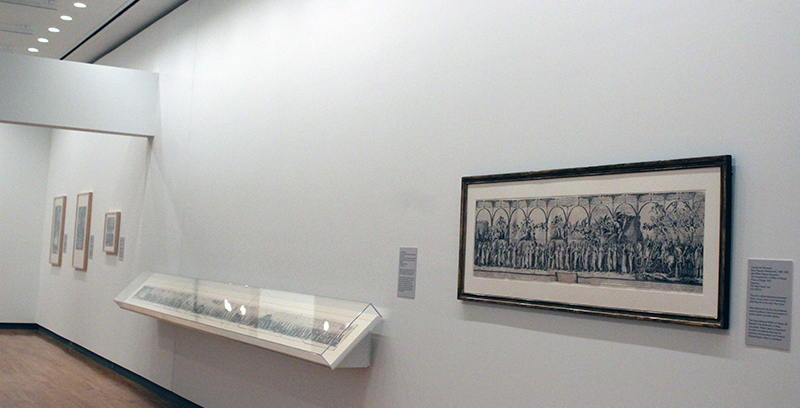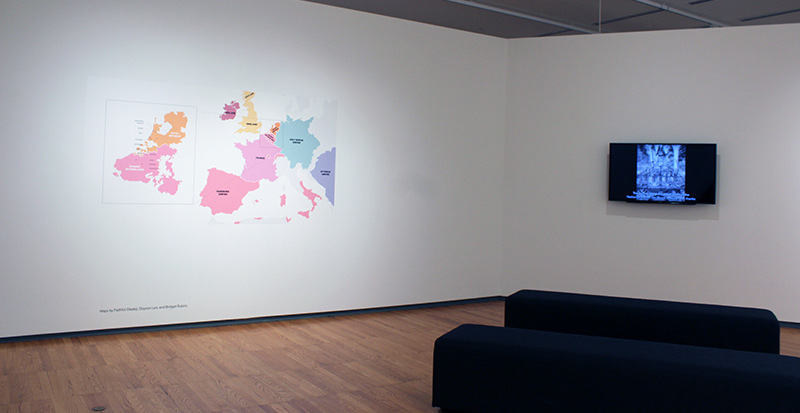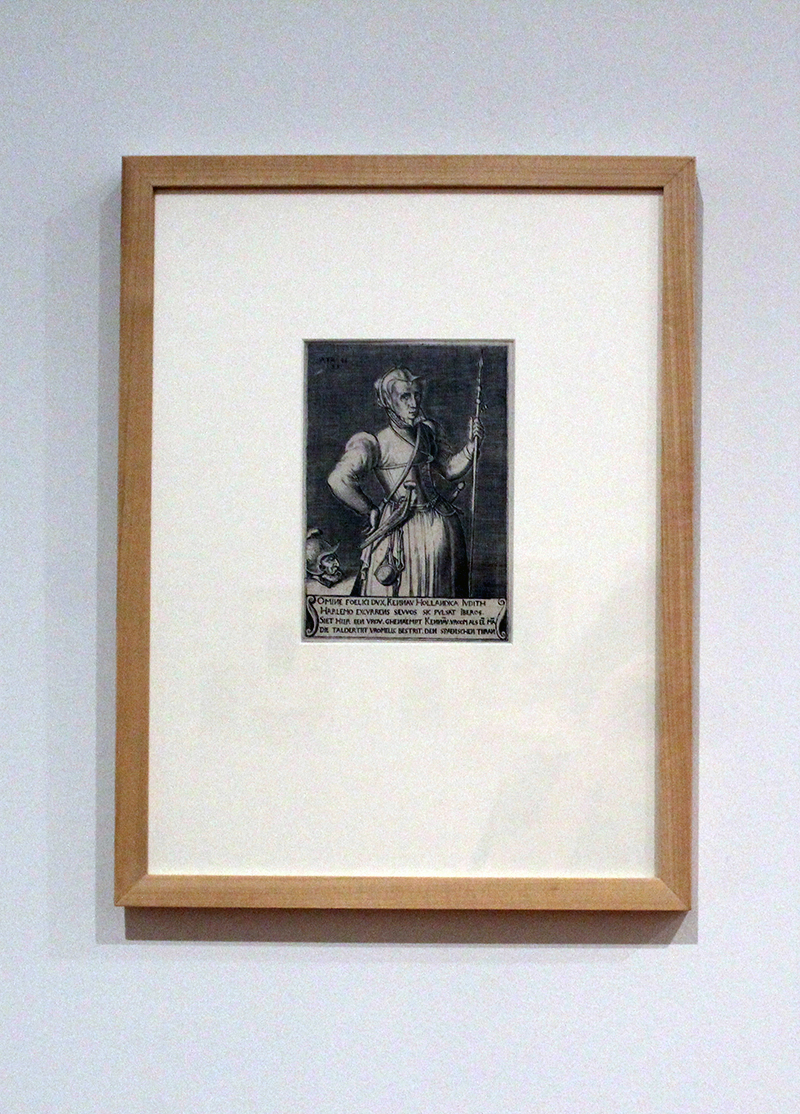Moments before we began my private tour of her masterfully curated exhibition, I asked Maureen Warren the question I’ve had since first learning of Fake News and Lying Pictures: Political Prints in the Dutch Republic. “Are you concerned that viewers will draw too many parallels to present day political media?” “No,” Warren said. “I want them to draw those parallels.” Her answer surprised me, although it probably shouldn’t have. After all, the first half of her strategically crafted title could just as easily refer to present day social media wars.
As Warren guided me through the six theme-based galleries, several things became clear. Though present day media continues to refer to our ongoing social and political crises as “unprecedented,” they are not. And while the technology used to create political prints has certainly changed, the intention has not. The exhibition captures a time in seventeenth-century Dutch history and culture, which boasted a unique freedom of artistic expression. Therefore, viewers might be best served by maintaining a dual focus on parallels to the present and distinctive aspects of the period.

Photo by Debra Domal.
Fake News and Lying Pictures exemplifies the power of the academic museum. Among its 100 prints and illustrated books are several newly purchased and rare works, making Krannert Art Museum home to one of the best collections of Dutch political prints outside of Europe. Though we tend to associate ground-breaking discoveries with the work of Illinois scientists, this years-in-the-making exhibition is equally paradigm shifting. From the care taken in the construction of horizontal wall displays and significant grant support, to the inclusion of museum interns in the creation of the exhibition’s introductory maps and video display, and the deep knowledge and dedication of its curator, Fake News and Lying Pictures is KAM at its best.

Photo by Debra Domal.
I was lucky enough to be given a near-hour long tour by the woman whose passion and mastery are evident in every choice, every description. I wish you had been there to see the sparkle in her eyes and feel her excitement as we stopped at some of the exhibition’s highlights. Through it all, Maureen Warren managed to make it all accessible. While it would be impossible to include every aspect of what I saw and learned in this space, I will offer this. Below you’ll find what to expect, what to look out for, and why you definitely won’t want to miss Fake News and Lying Pictures.

Photo by Debra Domal.
With 100 pieces in six themed galleries, you’ll want to plan for a 40-60 minute visit. This is definitely an exhibition where the details matter, especially in terms of the methodology and layered meaning. Warren indicated that the majority of the Dutch population during this time were literate. And since most of us will not arrive with a fluency in Dutch, do take the time to read each gallery’s theme summary as well as the individual descriptions. They will provide context and perspective, and help you better see those parallels Warren wants you to consider.
Don’t be intimidated by the scope. Use the six themes as a map, both literally and figuratively. They will help you travel through the exhibition consequently and keep the overarching concepts top of mind. And, in the case of “Dutch Lions and Other Political Animals,” they will remind you which political animal is associated with which nation. Hint: The rooster is French. The themes, in order, and with Warren’s descriptions are as follows.
Dutch Lions and Other Political Animals (animal satire); Founding Fathers/Fallen Fathers (murdered politicians); Spoils of the Seas (Dutch East and West India Companies, seafaring, naval warfare); Face of the Enemy (war crimes, criminals, etc.); Men of Honor/Women of Virtue (Dutch men, women, and children); Romeyn de Hooghe: Propaganda Master (arguably the most important political printmaker in seventeenth-century Europe).
Remember, you can always come back before a portion of the exhibit begins its tour this December. These pieces are incredibly delicate and rare, and as a result, flash photography is prohibited. While walking through a museum on your own provides major Zen moments, I’m inclined to suggest going with a friend or two. This is, after all, an exploration of communication practices.You can share your experiences and fill each other in on details that might have been missed.
Among my favorite pieces (and there are so many to choose from), are those Warren lingered over in our tour and those filled with aha moments. Yes, sometimes it’s actually fun to be wrong. Case in point, many of the prints (which were made from etchings) and broadsheets (made with both etched images and letterpress type) were widely circulated among the largely literate Dutch population. Some could be purchased for the cost of a beer, or rather a bier. Those with hand coloring, were, to my great surprise, still quite affordable and were often hung in the home to express and inspire patriotism. Don’t miss the chance to see the richly hued (and beautifully preserved) color in Jan Saenreda’s 1602 engraving Allegory of the Flourishing State of the United Provinces (see image carousel).
My favorite aha moments happened in the “Men of Honor, Women of Virtue” gallery where according to the theme summary “[people] were memorialized for many reasons—from exceptional acts of bravery to excelling at their profession, including military commanders, preachers, scholars, artists, etc.” This radical upending of gender roles featured an etching of Magdalena Moons, the daughter of a court official and a Catholic, who saved the town of Leiden by agreeing to marry Spanish commander, Francisco de Valdez, who was 30 years older, if he would agree to stop the attacks on her townspeople. Also included is an etching of Anna Maria van Schurman, the first woman to study at a Dutch university, where she studied printmaking and became fluent in 14 languages. And there, a few feet from the anonymous print of The Dutch Judith, pictured in a full power pose and armed for battle (see below), is Rembrandt’s Portrait of Jan Six, an art collector and politician, who was honored for supporting artists. The rich pigment and brilliant use of Japanese paper, which better captured the warm light Rembrandt envisioned, is worth a good, long look.

Photo by Debra Domal.
You definitely won’t want to miss the “Romeyn De Hooghe: Master Propagandist” gallery as he is considered the father of political satire. As Warren’s theme summary notes, “he made prints that invited educated viewers to laugh at famous people.” How’s that for a parallel to present day practices. De Hooghe inspired later artists like William Hogarth and James Gillray, whose work could be considered the very first editorial cartoons and certain memes.
I have merely scratched the surface. I urge you to see Fake News and Lying Pictures and experience your own aha moments. This is the perfect exhibition to start off the 2022 academic year and show new Illinois students in all fields the value of Krannert Art Museum and its contributions to art history.
And if you want to continue your own investigation of political prints in the Dutch Republic, a companion scholarly publication, designed and produced by Lucia | Marquand, with Maureen Warren as lead author and editor. Pre-order a copy of Paper Knives, Paper Crowns here.
Fake News & Lying Pictures: Political Prints in the Dutch Republic
September 1-December 17
Krannert Art Museum
500 E Peabody
Champaign
T–Sa 10 a.m. to 4 p.m.








